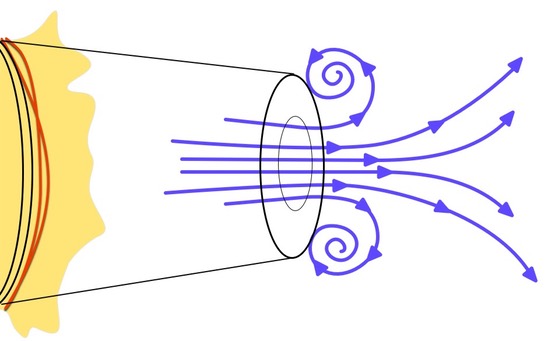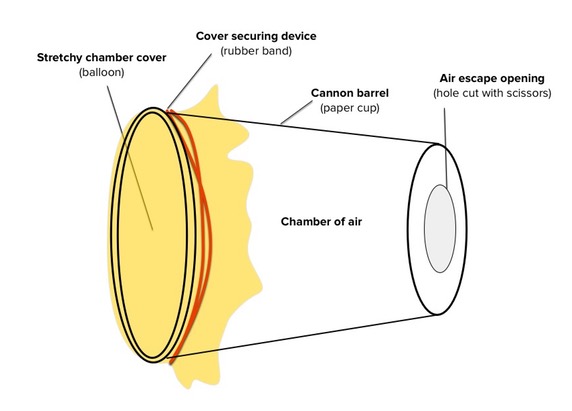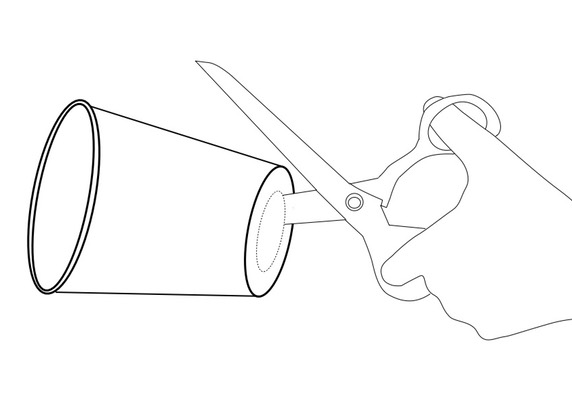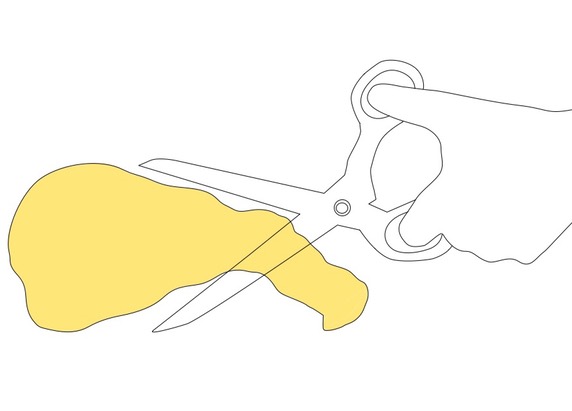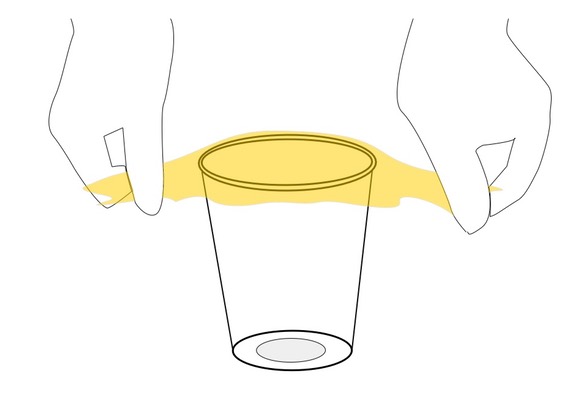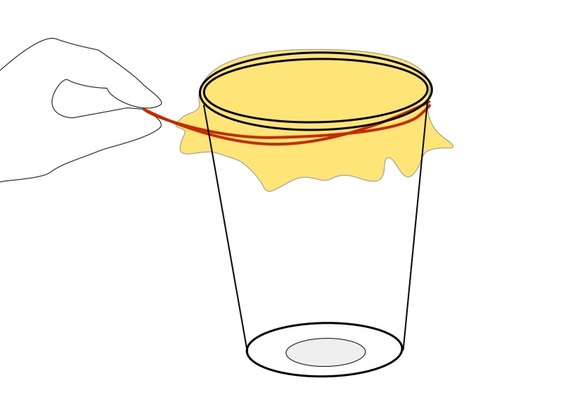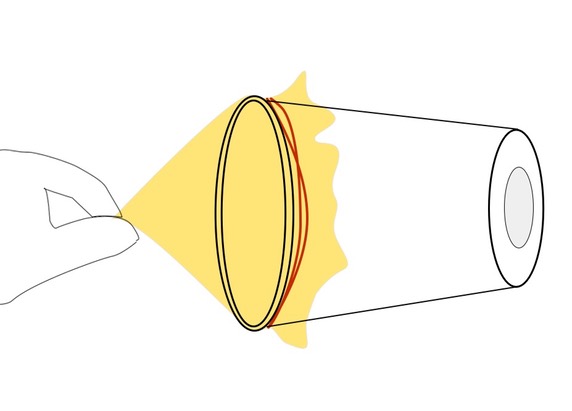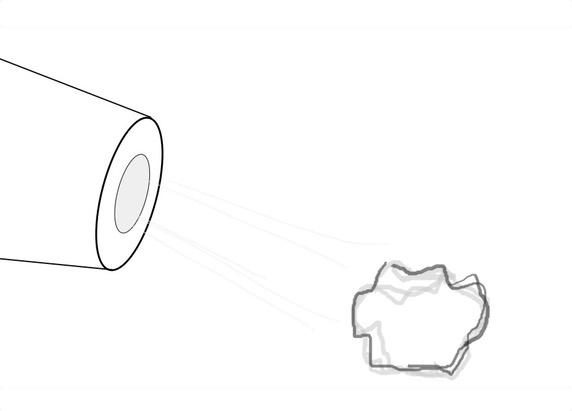Grade Level
6 - 8
minutes
15 min - 1 hr
subject
Physical Science
Activity Type:
Engineering activity, forces and motion
Can you throw…air?
Throwing a ball across a room is easy, but throwing air? That sounds like a bit more of a challenge!
Air is a gas, a state of matter that expands to fill any container it is in. Unlike a solid or a liquid, the molecules that make up the air we breathe aren’t close together or attracted to one another, but instead move randomly and collide with one another by chance. Air also doesn’t hold its shape, so it’s difficult to apply a consistent force to enough air molecules at a time to push, throw, or otherwise move them in a single direction. For example, it’s hard to corral air into a glass like you can with water (a liquid), or hit air with a baseball bat like you can a baseball (a solid).
Enter the Air Vortex Cannon
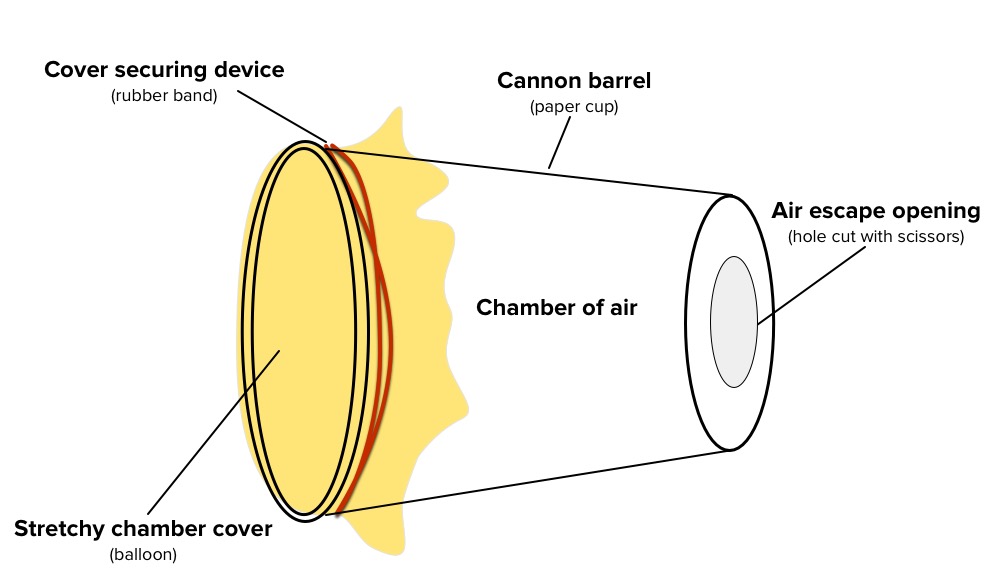
Here’s the basic design for an air vortex cannon, a simple device that overcomes a major barrier to throwing air: applying force to a bunch of air molecules to get them to move in a single direction.
After this experiment, you will be able to:
- Use an air cannon to demonstrate that air, like all matter, can move in response to force and exert force on other objects.
- Design, build, test, and re-design air cannons to maximize the force and distance traveled by the air jets produced.
Materials
Plastic or paper cup
Large balloon
Rubber band
Scissors
Lightweight objects such as toilet paper, cotton balls, toilet paper rolls, flagging tape
Measuring tape
Understand Your Air Vortex Cannon
An air vortex cannon works primarily by applying force quickly and efficiently to air molecules contained in a semi-enclosed space. When the stretchy balloon surface at the back of the cannon snaps forward, it collides directly with air molecules, accelerating them towards the opening of the cannon and setting off a chain reaction of high-speed collisions with other air molecules and the sides of the cannon’s barrel. The only way for all of these colliding high-speed air molecules to escape is out through the opening at the end of the barrel. The rapid escape of the air molecules forms a stream, or jet, of air that flows straight out of the cannon. Poof!
Test Your Air Vortex Cannon
How far can your air cannon shoot air? Find out! Hang up some strips of toilet paper from a doorframe. Start by standing directly in front of the toilet paper and fire your cannon at the toilet paper (the toilet paper should move). Slowly step backwards, firing away at the toilet paper screen until your cannon is just barely able to move the toilet paper, and then use a measuring tape to measure your distance to the doorframe. How far away are you from the door? That’s the maximum distance the air from your air cannon can travel while still exerting enough force to move the toilet paper.
Design a Better Air Vortex Cannon

Play with the design of your air cannon and get creative! You can make an air vortex cannon out of any container and stretchy plastic material. What changes can you make to this air cannon design so that it shoots air farther? You can use the Air Vortex Cannon Engineering Worksheet to write down your ideas. As you plan changes to your design, think about how force is applied to the air molecules inside of the chamber to form a jet. What would make the air molecules in the chamber travel faster and farther?
- Change the volume of your cannon.
Do you think larger cannons will shoot air farther than smaller ones? Why or why not? - Change the shape of your air cannon.
How do you think the shape of the air cannon will affect how far it can shoot air? Why? What shape do you predict will be the most effective at sending air across the room? - Change the shape or size of the opening to your air cannon.
Is a large opening or a small one better for shooting air long distances? How do you think the shape and texture of the edge of the opening affect how far your air cannon can shoot air? - Change the launch mechanism of your air cannon.
Are some stretchy materials better at shooting air long distances than others? How could changing the method or material you use for firing your air cannon change how far the air travels? What about how fast it travels? - Change the position of the opening of your air cannon.
Does the opening of the air cannon need to be opposite the stretchy chamber cover, or can it be on an adjacent side? How far away can the opening be from the stretchy chamber cover and still be effective?
Sketch and then build a prototype of your new air cannon design. When it’s finished, test your improved air cannon to see how far your new design is able to shoot air using the same test you used with the original air cannon. Want to continue making changes to improve your design? Try changing a single feature at a time, testing each change to see how it affects the maximum distance that your cannon is able to shoot air. Track the changes you made and the resulting maximum firing distance on this Air Vortex Cannon Engineering Worksheet. Which changes improved how far your air vortex cannon shoots air?
Why Is It Called an Air Vortex Cannon?
When a jet of air escapes the opening of an air vortex cannon into the still air outside, it forms a stable donut-shaped gaseous projectile. This flying gas donut is called a toroidal vortex or vortex ring, hence the name air vortex cannon. A toroidal (pronounced TOR-royd-uhl) vortex is caused by the friction of the jet of air with the edges of the cannon’s opening and the slow moving air outside the air cannon. As the speedy jet of air brushes against the hard circular opening of the cannon and the slow-moving air outside, its edges slow down and curl back away from the center of the jet, forming a donut shape, also called a torus.
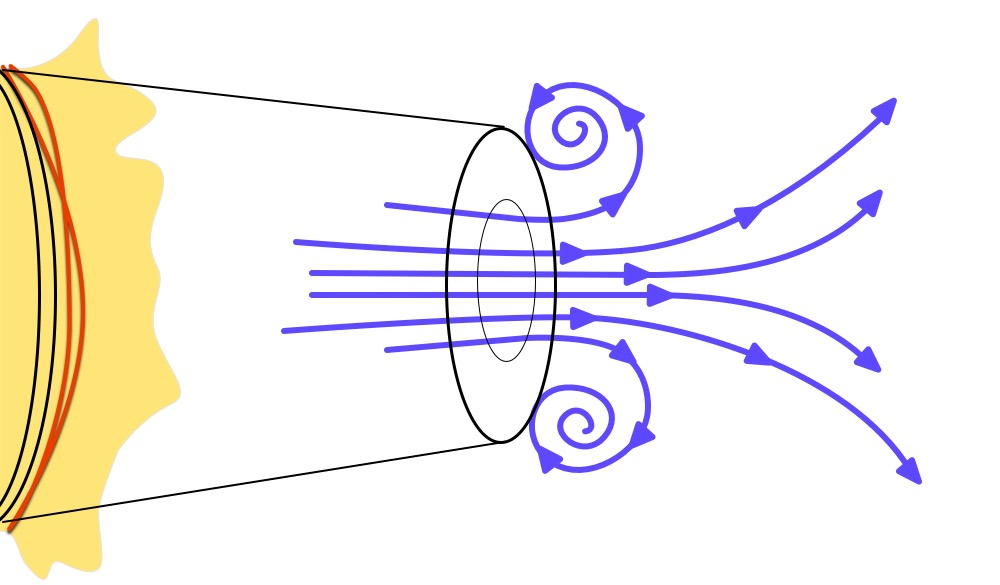
The still air around the vortex has a relatively high pressure that stabilizes the ring as it travels forward, helping it to keep its shape. To see the toroidal vortex generated by your cannon, have an adult fill the barrel with a little fog from a fog machine or with the CO2 gas collected from dry ice sitting in room-temperature water.
Vortex rings can occur just about any time a jet of a fluid is shot into a mass of still fluid, regardless of whether those fluids are gases or liquids. Vortices like the ones generated with your air cannon are created by a number of things, such as helicopter blades or mosses that disperse their spores by shooting them outward. You can observe vortex rings in a liquid by dropping food dye straight down into a glass of cold water. Whales and dolphins even blow vortices with bubbles underwater!
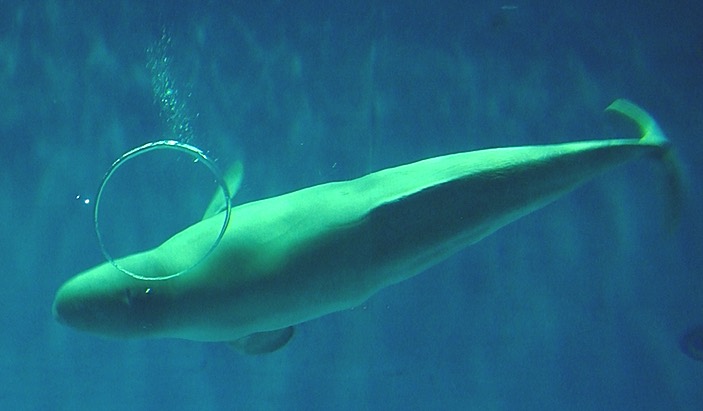
Learn about a vortex ring generator in the natural kingdom in the Science Friday video “The Secret Speedy Life of Plants”:
Further Reading:
Belugas making toroidal vortices:
Belugas blow bubbles based on mood. Science Daily. 7 Dec. 2015
The dangers of vortex rings for flying helicopters:
Flying Through the Vortex. Aviation Today. 1 Sep. 2015
More physics behind air cannons:
Physics in a Toroidal Vortex: Air Cannon. Physics Central, American Physical Society.
Standards
Next Generation Science Standards
MS-PS2-2
Plan an investigation to provide evidence that the change in an object’s motion depends on the sum of the forces on the object and the mass of the object.
Crosscutting Concepts
Stability and Change
Explanations of stability and change in natural or designed systems can be constructed by examining the changes over time and forces at different scales.
Cause and Effect
Cause and effect relationships may be used to predict phenomena in natural or designed systems.
Science and Engineering Practices
Constructing Explanations and Designing Solutions
Apply scientific ideas or principles to design an object, tool, process or system.
Images created for Science Friday by Ariel Zych unless otherwise noted.
Educator's Toolbox
Meet the Writer
About Ariel Zych
@arieloquentAriel Zych is Science Friday’s director of audience. She is a former teacher and scientist who spends her free time making food, watching arthropods, and being outside.
